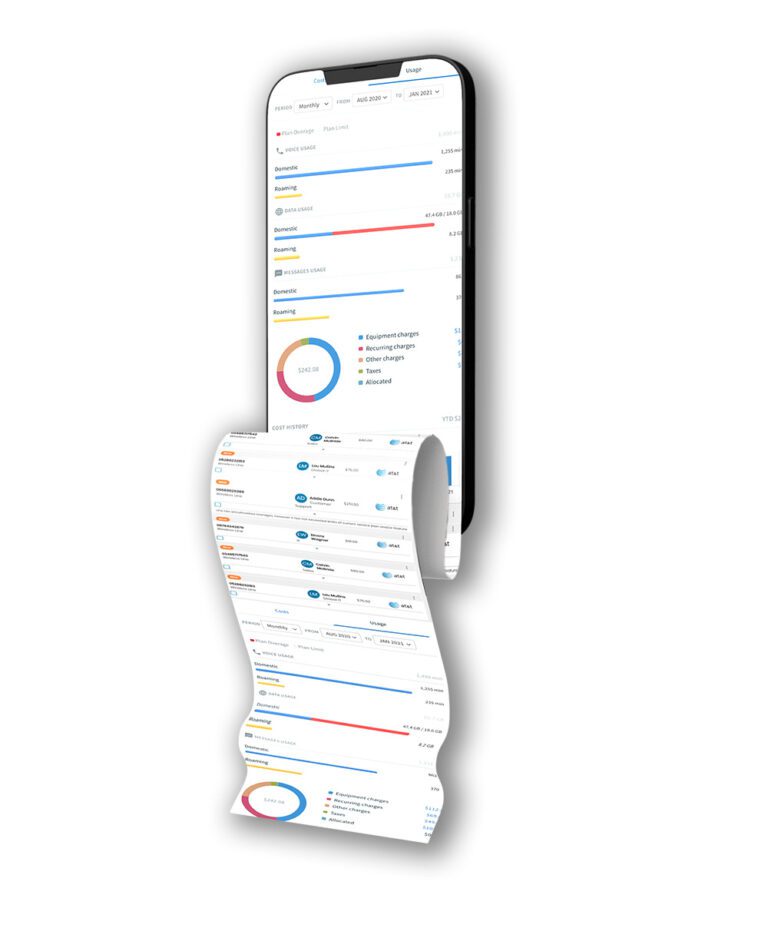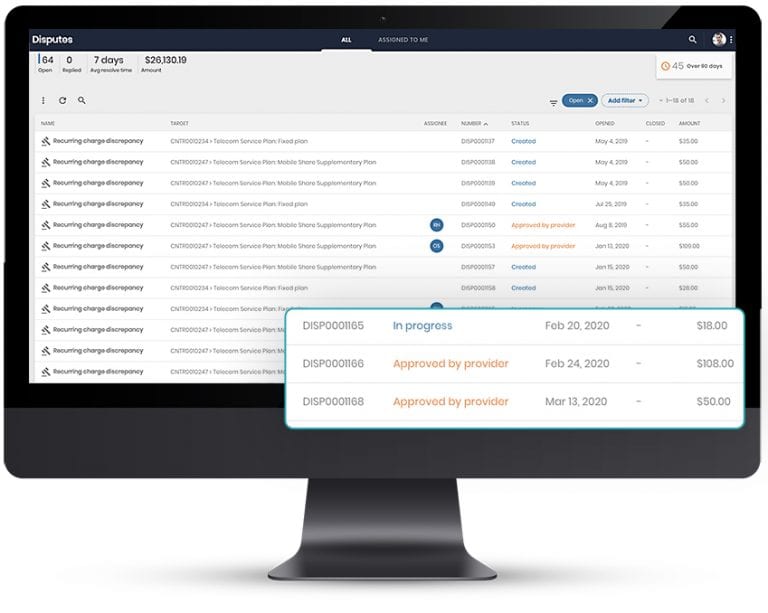Watch: This page in 30 seconds


Brightfin seamlessly handles your procurement, staging, deployment, exchange, recovery, and recycling of mobile devices
- Configurable storefronts for end users or centralized administrators
- Integrated approval workflow and communications
- Efficient order placement using carrier APIs
- MDM management
- Loading of custom applications
- Device accessory assembly (e.g., cases, screen protectors, chargers)

Around-the-clock help desk support for your mobile devices
- 24×7 or 12×5 phone support with IVR routing
- brightfin platform, hardware, and software support
- Device and accessory seed stock management
- Overnight replacement
- Warranty/OEM management

Exchange mobile devices and get money back for outdated devices
- Device and accessory seed stock management
- Overnight replacement
- Warranty/OEM management
- Device triage, inspection, and grading
- Data wiping and restoring
- Market value device trade-ins
- Environmentally conscious device destruction

“brightfin allows me to manage my mobile device deployments way more efficiently. By automating tedious IT tasks, my team has more time to perform business-critical operations.”
Manufacturing
Fixed telecom lifecycle management
- Automated invoice processing
- Accurate inventory and contracts
- Provider quote management
- Dispute management
- Contract management
- Chargebacks and allocations
- Installation requests
- Telecom bill pay
brightfin is the only way to manage your mobile and telecom lifecycle management natively inside of ServiceNow
Which provides loads of additional TEM benefits beyond just carrier cost savings, like efficiencies from automated workflows, easy allocation of costs, and much more.
Mobile and telecom lifecycle management frequently asked questions
Why is mobile device lifecycle management complex?
The lifecycle of mobile devices continues to evolve as organizations identify new mobile use cases and realize the rising cost and high turnover of mobile equipment. In many cases, internal support for these new technologies has been limited. As a result, leading organizations rely on industry expertise from brightfin to enable high volume, low friction delivery of mobile hardware to a variety of mobile roles.
What should I be asking about mobile lifecycle management?
The rapid growth of connected devices has changed the way many organizations deliver value and developing a robust device deployment plan is more critical than ever. Work with our team of experts to understand your organization’s unique technology lifecycle management needs and answer key questions, such as:
- What is the primary goal of enabling this user or group of users with the technology in hand?
- What peripheral accessories will this use case require?
- What software technologies should be paired with this hardware to enable the employee outcomes we are targeting for this deployment?
- What is the expected lifecycle of this unit?
- What carriers will be enabled for these units?
- Are these units being deployed one-to-one or one-to-many?
How do I maintain the sustainability of my mobile lifecycle management program?
Identifying the right procurement source and method to ensure the sustainability of the mobile experience for employees is crucial to technology lifecycle management. brightfin can support procurement from the carrier, third-party distributors, and the resale market to allow for the purchase and preparation of your mobile devices in a timely and efficient manner.
How do I get mobility self-service portals inside of ServiceNow?
brightfin delivers simple, easy-to-use self-service portals right inside of ServiceNow, which means no extra training is required for your team members. You can create configurable rules according to your organizational policies for how to handle the ordering and procurement of mobile devices. New orders, upgrades, plan changes, and more are all easily achievable with brightfin’s native app built on ServiceNow.
How to avoid productivity loss with mobile device management?
Preparing your mobile units for use can be the difference between gained productivity and lost productivity. Does the process for a user need to be long and painful? No! And there are multiple methods to help reduce the barriers to technology utilization with advanced preparation of these hardware units.
Over-the-air configuration
Tools like Apple Business Manager and Enterprise for Work enable organizations to preconfigure their security and application deployments based on employee profile. For low complexity mobile deployments, those tools offer more efficient ways of enabling the software of a mobile device without multiple touches. By using brightfin, you’ll ensure that your configuration with these tools are in sync with the industry’s best practices for over-the-air deployment and that they align with the outcomes your team and employees expect.
Zero-touch mobile device deployment
When multiple peripheral items need to be brought together, assembled, tested, and then marked ready for use, the preparation of the units prior to reaching their desired user is paramount to the technology’s adoption. brightfin helps preconfigure your employees’ mobile devices to the specifications your organization requires, assembles accessories, downloads and installs software, and validates the capabilities of the unit prior to reaching its intended user.
How to deploy mobile devices seamlessly?
Schedule new technology deployments to deliver a seamless user experience from materials to training. This means no lost productivity for your end-users to ensure your new technology is supported without delays. Leverage early adopter feedback to optimize the deployment and improve adoption rates.
Device deployment solutions
Adding complex device rollouts across multiple locations and a wide variety of technologies presents unique challenges for already overloaded IT teams. brightfin provides powerful visibility by location and initiative so you can be confident your technology investments are driving results.
How to recover mobile devices from employees in the field?
Hardware asset management doesn’t stop when devices are out in the field. Once deployed, mobile devices have a predetermined life expectancy, whether set by the organization, user group, or use case. With brightfin, you can easily recover devices from the field, validate them for usability, and redeploy devices to help reduce costs. By ensuring no devices go unreturned you’ll avoid potentially crippling security risks and financial repercussions. An IBM report estimates the IP loss of a stolen or lost mobile device is between $3-$4 million dollars per occurrence.
brightfin allows you to:
- Actively collect devices as they naturally move through their lifecycle
- Collect devices as part of your HR processes for employee termination and role changes
What Is Telecom Lifecycle Management?
Telecom lifecycle management is the process of managing the entire life cycle of a telecommunications system from inception to decommissioning. It involves all aspects of the business – from planning and design to construction, operation, maintenance, and eventual decommissioning of the network. The term “lifecycle” refers to a period of time during which an asset is used or useful.
What is a telecom lifecycle management strategy?
A lifecycle management strategy provides direction for all stakeholders involved in the operation of a telecoms network or service. This involves developing a plan that outlines how to manage each stage of the lifecycle effectively.
The following stages are typically included in a lifecycle management strategy:
Planning – this stage involves identifying business needs, defining requirements and designing solutions (for example, new services)
Design – this stage involves creating an architecture that meets specific requirements
Implementation – this stage involves installing equipment and software as well as configuring it for use (for example, integrating applications with networks)
Operation – this stage involves running equipment efficiently and effectively (for example, monitoring performance), keeping it updated and maintaining it over time (for example, upgrading hardware). It also includes troubleshooting problems when they arise
Why is telecom lifecycle management important?
Telecom lifecycle management is critical because it allows organizations to ensure uptime of the network, order and deliver new services, improve efficiencies, and reduce costs. The approach should be flexible enough to accommodate changing business needs and technologies while ensuring compliance with relevant legislation and regulations.

